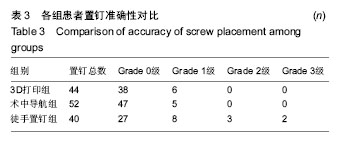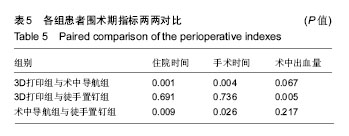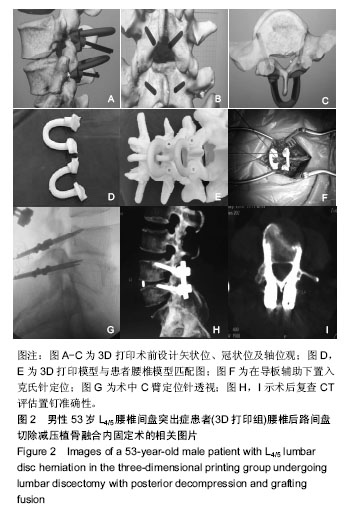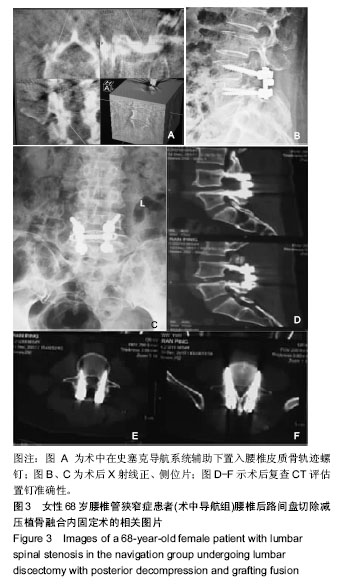| [1] Wilcox B, Mobbs RJ, Wu A, et al. Systematic review of 3D printing in spinal surgery: The current state of play. J Spine Surg. 2017;3(3): 433-443.[2] Zhao Z, Liu Z, Hu Z, et al. Improved accuracy of screw implantation could decrease the incidence of post-operative hydrothorax? O-arm navigation vs. Free-hand in thoracic spinal deformity correction surgery. Int Orthop. 2018; 42(9): 2141-2146.[3] Cramer J, Quigley E, Hutchins T, et al. Educational material for 3D visualization of spine procedures: Methods for creation and dissemination. J Digit Imaging. 2017;30(3): 296-300.[4] Choy WJ, Mobbs RJ, Wilcox B, et al. Reconstruction of thoracic spine using a personalized 3D-Printed vertebral body in adolescent with t9 primary bone tumor. World Neurosurg. 2017;105:1013-1032.[5] Kojima K, Asamoto S, Kobayashi Y, et al. Cortical bone trajectory and traditional trajectory--a radiological evaluation of screw-bone contact. Acta Neurochir. 2015;157(7): 1173-1178.[6] Li HM, Zhang RJ, Gao H, et al. Biomechanical fixation properties of the cortical bone trajectory in the osteoporotic lumbar spine. World Neurosurg. 2018.[7] Lee GW, Ahn M. Comparative study of cortical bone Trajectory-Pedicle screw (Cortical screw) versus conventional pedicle screw in Single-Level posterior lumbar interbody fusion: A 2-Year post hoc analysis from prospectively randomized data. World Neurosurg. 2018;109:e194-e202.[8] Keorochana G, Pairuchvej S, Trathitephun W, et al. Comparative outcomes of cortical screw trajectory fixation and pedicle screw fixation in lumbar spinal fusion: Systematic review and meta-analysis. World Neurosurg. 2017;102:340-349.[9] Patel SS, Cheng WK, Danisa OA. Early complications after instrumentation of the lumbar spine using cortical bone trajectory technique. J Clin Neurosci. 2016;24:63-67.[10] Snyder LA, Martinez-Del-Campo E, Neal MT, et al. Lumbar spinal fixation with cortical bone trajectory pedicle screws in 79 patients with degenerative disease: Perioperative outcomes and complications. World Neurosurg. 2016;88:205-213.[11] Matsukawa K, Yato Y, Nemoto O, et al. Morphometric measurement of cortical bone trajectory for lumbar pedicle screw insertion using computed tomography. J Spinal Disord Tech. 2013; 26(6): E248-E253.[12] Kaito T, Matsukawa K, Abe Y, et al. Cortical pedicle screw placement in lumbar spinal surgery with a patient-matched targeting guide: A cadaveric study. J Orthop Sci. 2018.[13] Aoude AA, Fortin M, Figueiredo R, et al. Methods to determine pedicle screw placement accuracy in spine surgery: A systematic review. Eur Spine J. 2015;24(5): 990-1004.[14] Mobbs RJ. Differences in bone mineral density between cortical bone trajectory and traditional lumbar pedicle screws: Commentary. Spine J. 2016;16(7): 842.[15] Delgado-Fernandez J, García-Pallero MÁ, Blasco G, et al. Review of cortical bone trajectory: Evidence of a new technique. Asian Spine J. 2017; 11(5): 817.[16] Senoglu M, Karadag A, Kinali B, et al. Cortical bone trajectory screw for lumbar fixation: A quantitative anatomic and morphometric evaluation. World Neurosurg. 2017;103:694-701.[17] Kasukawa Y, Miyakoshi N, Hongo M, et al. Short-Term results of transforaminal lumbar interbody fusion using pedicle screw with cortical bone trajectory compared with conventional trajectory. Asian Spine J. 2015;9(3): 440.[18] Hussain I, Virk MS, Link TW, et al. Posterior lumbar interbody fusion with 3D-Navigation guided cortical bone trajectory screws for l4/5 degenerative spondylolisthesis: 1-Year clinical and radiographic outcomes. World Neurosurg. 2018;110:e504-e513.[19] Feng Z, Li X, Tang Q, et al. Transforaminal lumbar interbody fusion with cortical bone trajectory screws versus traditional pedicle screws fixation: A study protocol of randomised controlled trial. BMJ Open. 2017;7(10): e17227.[20] Cho W, Job AV, Chen J, et al. A review of current clinical applications of Three-Dimensional printing in spine surgery. Asian Spine J. 2018; 12(1): 171.[21] Sugawara T, Higashiyama N, Kaneyama S, et al. Accurate and simple screw insertion procedure with Patient-Specific screw guide templates for posterior C1-C2 fixation. Spine. 2017;42(6): E340-E346.[22] Wu HH, Su I, Hsieh C, et al. Accuracy and safety of using customized guiding templates for cervical pedicle screw insertion in severe cervical deformity, fracture, and subluxation: A retrospective study of 9 cases. World Neurosurg. 2018;116:e1144-e1152.[23] Bovonratwet P, Nelson SJ, Ondeck NT, et al. Comparison of Thirty-Day complications between navigated AndConventional Single-Level instrumented posterior lumbar fusion: A propensity score matched analysis. Spine. 2018.[24] Wei R, Guo W, Ji T, et al. One-step reconstruction with a 3D-printed, custom-made prosthesis after total en bloc sacrectomy: A technical note. Eur Spine J. 2017;26(7): 1902-1909.[25] Hussain I, Virk MS, Link TW, et al. Posterior lumbar interbody fusion with 3D-Navigation guided cortical bone trajectory screws for l4/5 degenerative spondylolisthesis: 1-Year clinical and radiographic outcomes. World Neurosurg. 2018; 110:e504-e513.[26] Rodriguez A, Neal MT, Liu A, et al. Novel placement of cortical bone trajectory screws in previously instrumented pedicles for adjacent- segment lumbar disease using CT image-guided navigation. Neurosurg Focus. 2014;36(3): E9.[27] Urbanski W, Jurasz W, Wolanczyk M, et al. Increased radiation but no benefits in pedicle screw accuracy with navigation versus a freehand technique in scoliosis surgery. Clin Orthop Relat R. 2018; 476(5): 1020-1027. |
.jpg)







.jpg)
.jpg)